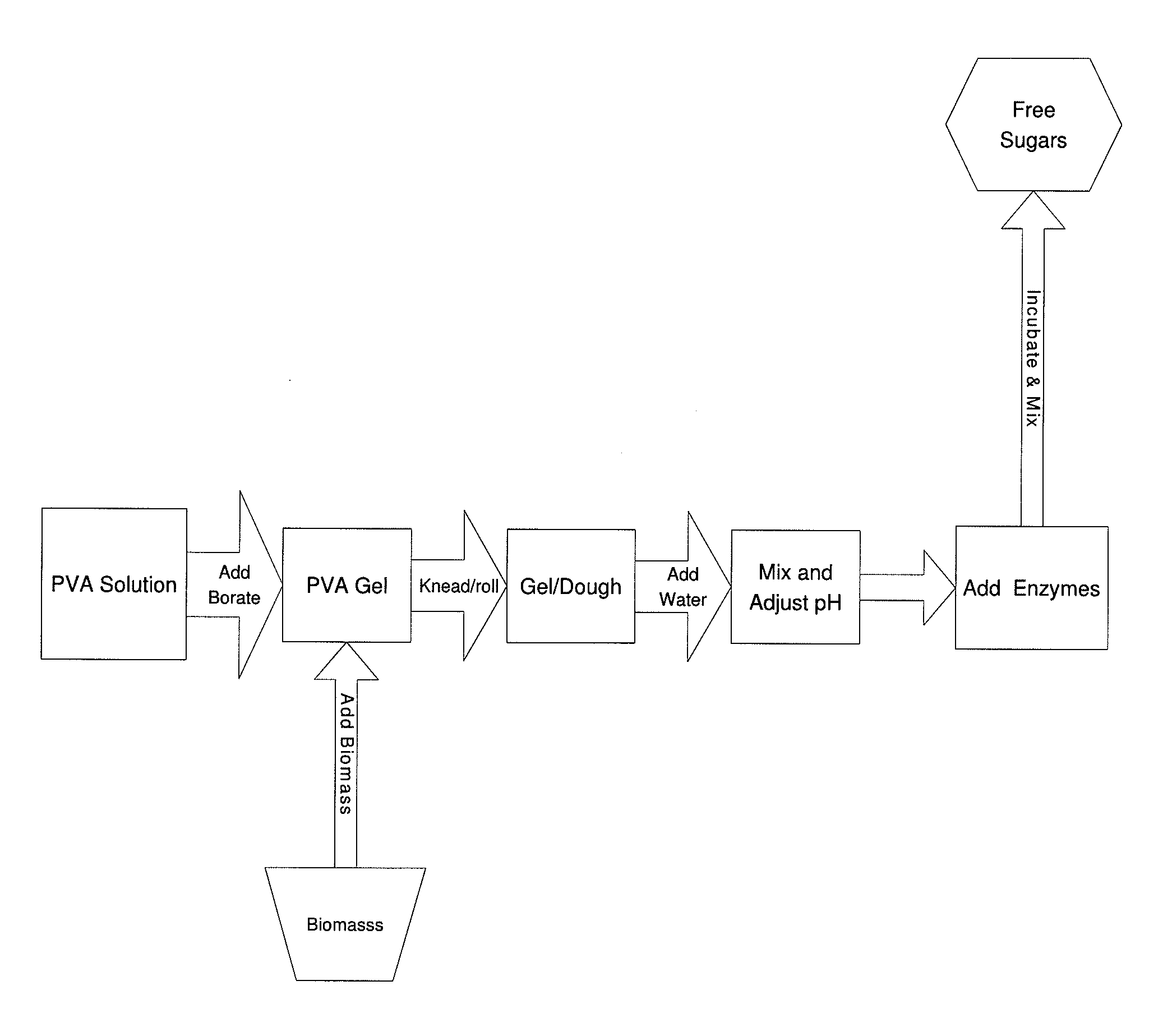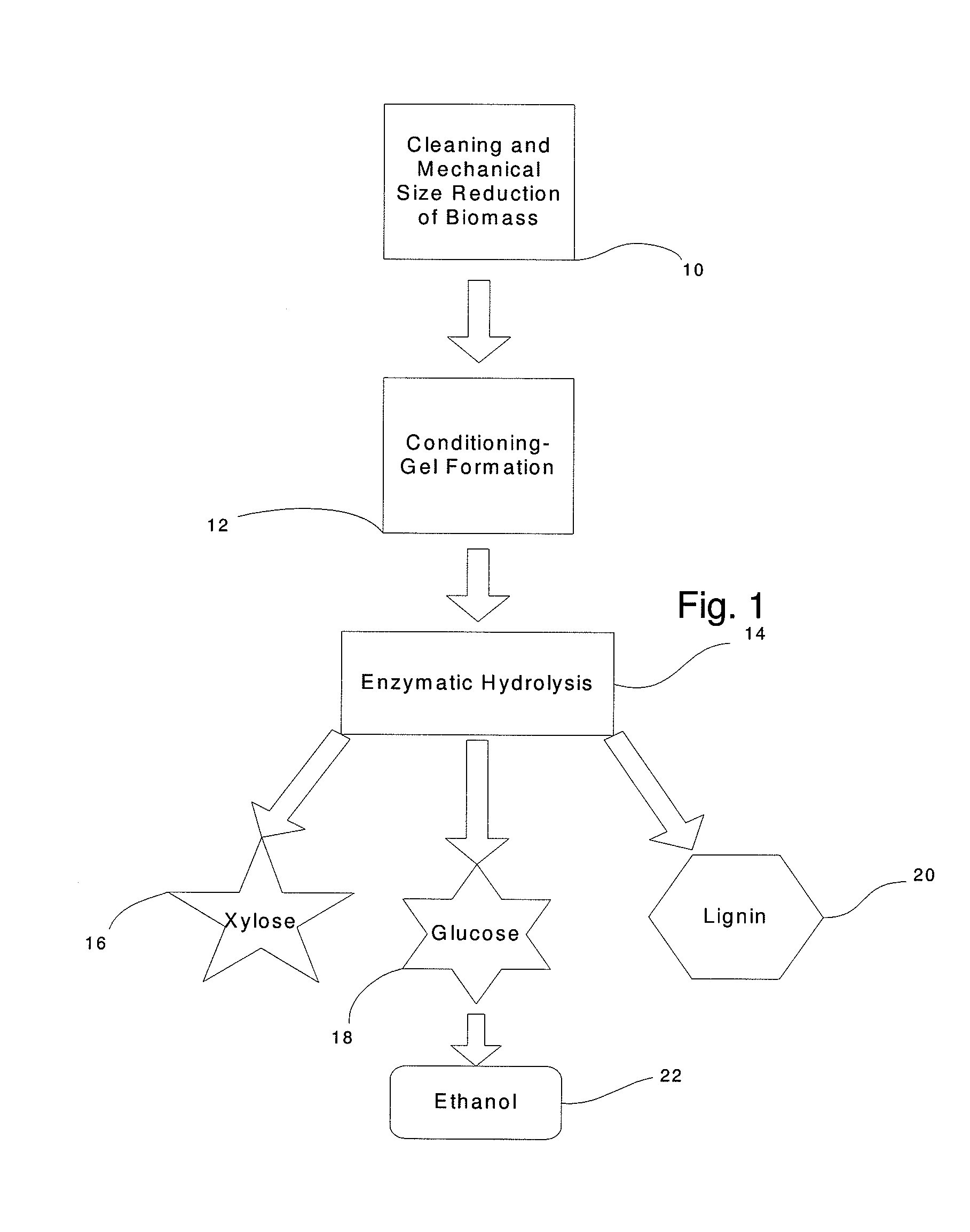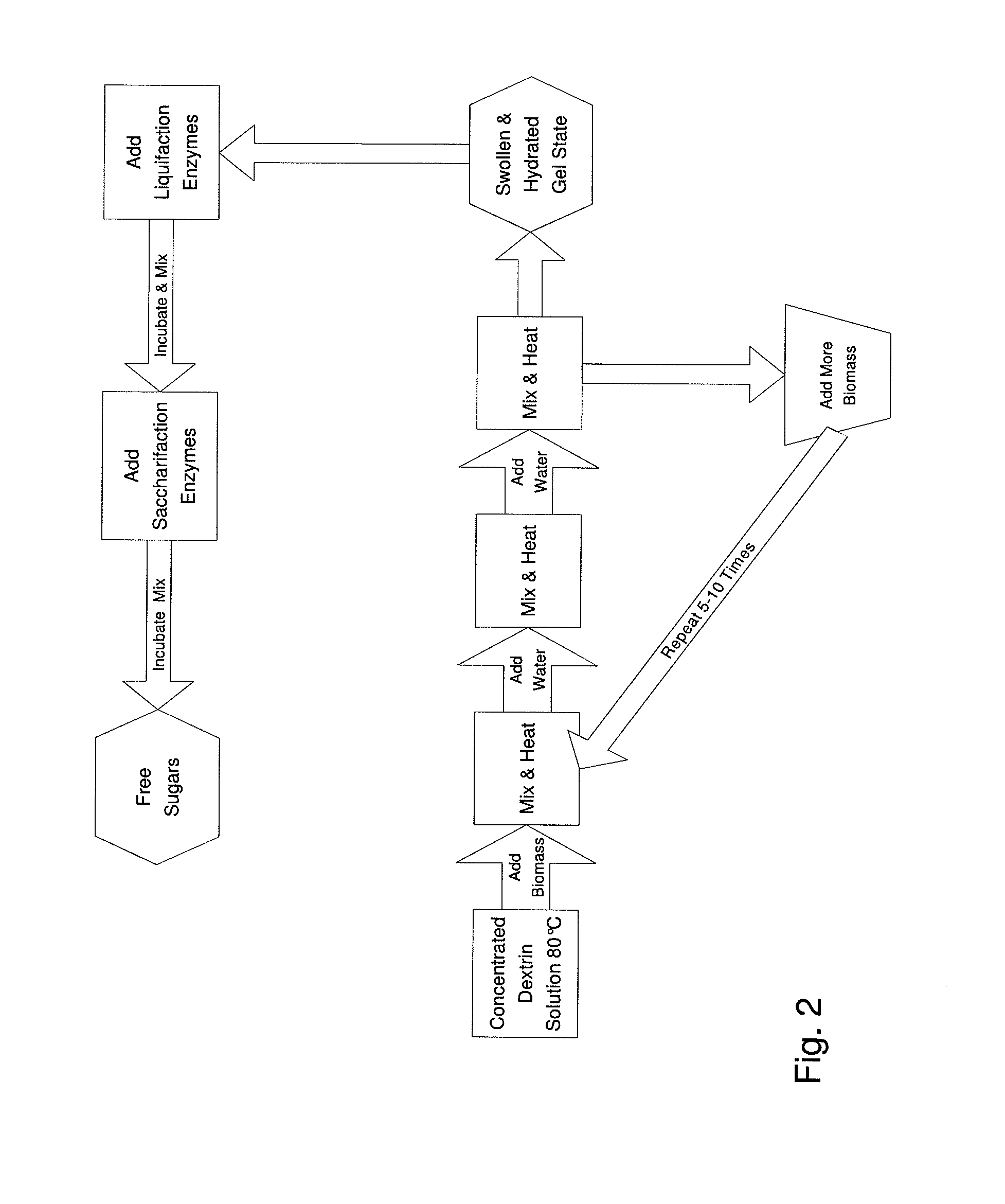Simplified Method for Digestion of Cellulosic Biomass
a cellulosic biomass and simple technology, applied in the field of cellulosic biomass digestion, can solve the problems of inability to the inability to further reduce the size of the biomass particles, and the inability to achieve the effect of reducing the viscosity of the mixture, and controlling the viscosity
- Summary
- Abstract
- Description
- Claims
- Application Information
AI Technical Summary
Benefits of technology
Problems solved by technology
Method used
Image
Examples
Embodiment Construction
The following description is provided to enable any person skilled in the art to make and use the invention and sets forth the best modes contemplated by the inventor of carrying out his invention. Various modifications, however, will remain readily apparent to those skilled in the art, since the general principles of the present invention have been defined herein specifically to provide improved methods for reducing biomass into a readily hydrolyzable form through the use of chemical conditioning / solvation with hydrophilic polymers.
The present inventor has analyzed the processes used to reduce starch to fermentable sugars. In a factory that converts corn into ethanol the corn starch (primarily a glucose α1-4 polymer) is first hydrated by “cooking” it in water. In the presence of water at an elevated temperature the starch polymers become hydrated and form a gel. The starch polymers are generally too long to become fully soluble; however, as a hydrated gel the polymers are readily a...
PUM
| Property | Measurement | Unit |
|---|---|---|
| diameters | aaaaa | aaaaa |
| diameters | aaaaa | aaaaa |
| time | aaaaa | aaaaa |
Abstract
Description
Claims
Application Information
 Login to View More
Login to View More - R&D
- Intellectual Property
- Life Sciences
- Materials
- Tech Scout
- Unparalleled Data Quality
- Higher Quality Content
- 60% Fewer Hallucinations
Browse by: Latest US Patents, China's latest patents, Technical Efficacy Thesaurus, Application Domain, Technology Topic, Popular Technical Reports.
© 2025 PatSnap. All rights reserved.Legal|Privacy policy|Modern Slavery Act Transparency Statement|Sitemap|About US| Contact US: help@patsnap.com



